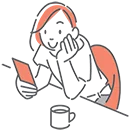 Sometimes big things come in little boxes. Such is the case with Carrara 5 from Eovia. I have to admit, the product never really crossed my path’and I’ve been around. So, when I started to look through it for review, I was very surprised by how advanced the toolset is in this extremely low-priced package.
Sometimes big things come in little boxes. Such is the case with Carrara 5 from Eovia. I have to admit, the product never really crossed my path’and I’ve been around. So, when I started to look through it for review, I was very surprised by how advanced the toolset is in this extremely low-priced package.
Carrara is the offspring of Ray Dream Designer and Infi ni-D, making it part of a family tree that is just as old as Maya, 3ds Max, Softimage and Lightwave. It has a substantial user base, but somehow it was never able to get a toehold into the animation and visual effects industries.
As far as low-cost 3D packages go, this one packs a wallop. You have sub-D modeling, full-character rigging and animation, subsurface scattering, ambient occlusion, particle systems and a substantial terrain generator. The interface is chock full of libraries and icons, allowing you to drag and drop pre-made scenes, objects, lighting setups, etc into the Assembly Room. This is a great way to quickly assemble a scene, especially for animatic or previz purposes. Once you get beyond that assembly stage, the lighting and rendering tools are formidable enough to be dangerous. Using Ray Dream as the raytracing backbone, Carrara allows for some really nice imagery.
I felt a bit lost within Carrara, but I would blame my lack of experience more that specific design. I am sure that the diehards would run circles around me. Regardless, I am not really a huge fan of compartmentalizing the processes’ which is why I’ve stayed away from Lightwave. Carrara’s approach to having different ‘rooms’ where different stages happen (assembly, modeling, lighting, rendering) may feel ineffi cient to some.
Another serious drawback, which might be the cause of the oversight in the industry, is the lack of real-world tools. For instance, I could not fi nd any controls in the camera that correlate to the size of the filmplane or filmback. An 18mm lens on a 16mm camera is very different than one on a 35mm camera or an HD camera or a DV camera. This is because the size of the recorded image is different for all the cameras. The filmback is as integral and irremovable as the lens. Similarly, I could not find controls to adjust the decay of a light source outside of a falloff range slider’and this apparently gives you the ability to cut off the light at a certain distance (which is still useful). However, without being able to set your light to falloff at least linearly (squared would be more accurate), half of a lighting TDs control is removed. Without these straightforward controls, there is no possible way to do any serious production work that deal with live-action footage.
Overall, however, Carrara is a substantial 3D program. It is absolutely astonishing how much they have crammed into this little package. How they keep the price down around $300 is remarkable. It makes me question the cost of other programs which are 10 to 30 times greater. You can accomplish almost anything that the big boys do with some sweat equity and ingenuity’and it certainly would be a good foundation for hobbyists to sharpen their 3D skills without a huge investment.
Website: www.eovia.com
Price: $199 (companion license); $399 (Carrara Pro); $349 (Plus Hexagon 1); $399 (plus Poser 6)
Todd Sheridan Perry reviews the latest animation and vfx-related software releases and gizmos for Animation Magazine. He is the co-owner and vfx supervisor for Max Ink Caf’ and Max Ink Productions. If you have review suggestions for him, you can email him at ducky@maxinkcafe.com.





